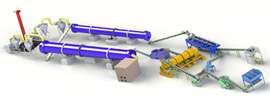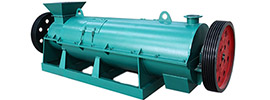What is the measure of soil fertility? Most agriculturalists probably think that if the soil is high in nitrogen, phosphorus and potassium nutrients, the soil is fertile. Is this really the case?
In fact, soil science and plant nutrition have confirmed that the indicator to measure the level of soil fertility is the amount of organic matter content in the soil.
Soil organic matter generally refers to the soil in various forms of organic compounds containing carbon, refers to the soil from the life of the material, is the soil in addition to minerals, air, water, it is the most active part of the soil, is one of the important indicators of soil fertility. It can be said that without organic matter there is no soil fertility.
Why organic matter is so important, it has to start from its function, seven major roles determine the level of soil fertility.
First, organic matter is the main source of soil nutrients
Organic matter contains a variety of nutrients required for crop growth, can directly or indirectly provide N, P, K, Ca, Mg, S and other trace elements for crop growth, WeChat search vegetable farmers circle concern. More than 95% of N elements are present in the soil in organic state. In addition to the applied N fertilizer, the main source of soil N elements is provided by the decomposition of organic matter.
Second, organic matter can promote the growth and development of crops
Humic acid in organic matter can enhance plant respiration, improve the permeability of cell membranes and enhance the absorption of nutrients. Meanwhile, the vitamins and some hormones in organic matter can promote the growth and development of plants.

Third, organic matter can promote the formation of soil structure and improve the physical properties of soil
Humus in organic matter is the main cementing agent of soil agglomerates, and soil organic colloid is an indispensable cementing substance for forming water-stable agglomerate structure, so it helps clayey soil to form a good structure, thus changing the soil pore condition and water and gas ratio and creating a suitable soil looseness. On the other hand, it can improve the agglomeration of sandy soil and improve its excessively loose state.
Fourth, organic matter can improve the fertility and buffering performance of the soil
Organic colloid in soil organic matter, with a large number of negative charges, has a strong adsorption capacity, can adsorb a large number of cations and water, its cation exchange and water absorption rate than clay particles to be several times, or even dozens of times, so it can improve the ability of the soil to retain fertilizer and water storage, but also improve the buffering of the soil to acid and alkali.
Fifth, organic matter can promote the activities of soil microscopic organisms
Soil organic matter supplies the energy and nutrients needed by soil microorganisms, which is beneficial to the activities of microorganisms.
Sixth, organic matter can improve the soil temperature
Organic matter is darker in color, usually brown to dark brown, with strong heat absorption ability, which can increase the ground temperature and improve the soil thermal condition.
Seven, organic matter can improve soil nutrient properties
The humus in organic matter has complex cooperation, which helps to eliminate the pollution of soil. For low-yielding fields, by increasing the content of organic matter can fertilize the soil and improve the level of ground strength. For high-yielding fields, organic matter also needs to be replenished continuously due to its constant decomposition. Humus can form complexes or chelates with phosphorus, iron and aluminum ions to avoid precipitation of insoluble phosphate and increase the amount of effective nutrients.
 Send us a Email
Send us a Email Wulong Industrial Cluster
Wulong Industrial Cluster Have any question?
Have any question?



















